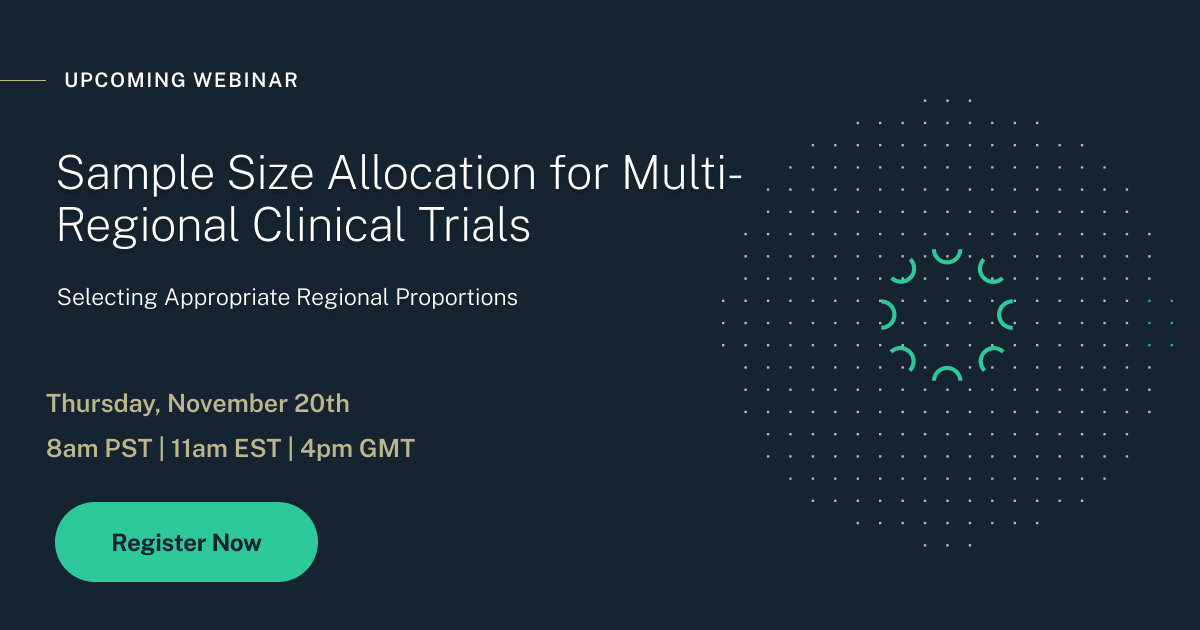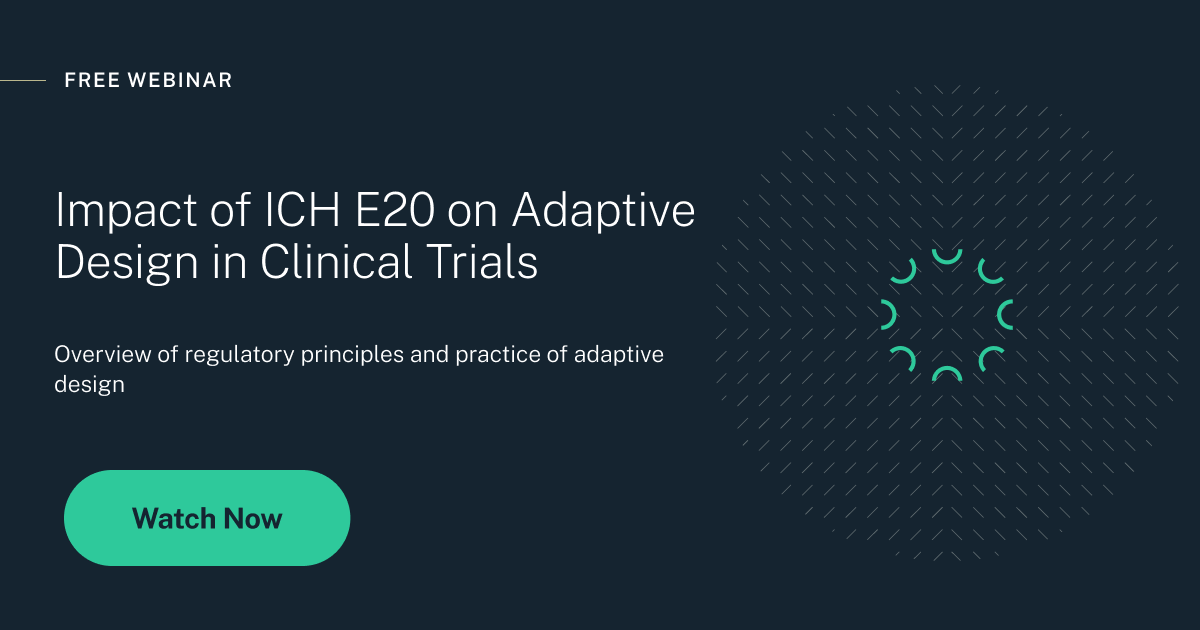Power for Complex Hypotheses
- Non-Inferiority t-test for Two Means.nqt
- Inferiority Tests for the Difference of Two Proportions.nqt
- Non-Inferiority t-test for Two Means with Unequal n's.nqt
- Two One-Sided Equivalence Tests for Two Group Design.nqt
Webinar Playback:
Power for Complex Hypotheses
In this tutorial, Denis Desmond, research statistician at nQuery, has explored complex hypotheses as an alternative to inequality testing. Inequality testing is used to determine if a clinically meaningful difference between a new treatment and a placebo. If however, we want to compare a new treatment to a standard therapy or existing drug we need to test a different hypothesis.
Learning objectives of this webinar:
The webinar "Power for Complex Hypotheses" aims to equip researchers with the knowledge and tools necessary to design and analyze clinical trials involving complex hypotheses beyond traditional inequality testing. By the end of this webinar, you will be able to:
Key Areas Covered:
1. Understand Power Analysis for Complex Hypotheses
-
Comprehend the concept of power analysis in the context of non-inferiority, superiority by a margin, and equivalence testing.
-
Recognize the importance of selecting appropriate margins and their impact on study outcomes.
2. Explore Key Design Considerations
-
Identify critical factors in designing trials for complex hypotheses, including margin selection and regulatory guidelines.
-
Understand the implications of different hypothesis tests in various research contexts, such as generic drug development and medical device evaluation.
3. Perform Sample Size Determination for Complex Hypotheses
-
Learn methodologies for calculating sample sizes in non-inferiority designs for means and proportions.
-
Understand sample size calculations for superiority by a margin and equivalence designs, ensuring adequately powered studies.
Power for Complex Hypotheses: A Quick Guide for Biostatisticians
Sample Size for Non-Inferiority, Superiority by a Margin and Equivalence Testing
Complex hypotheses can be used to test if a new treatment is non-inferior, superior, or equivalent to an existing one. These type of tests are common in the areas of generic drug development, medical devices, and design and sample size for vaccine trials. For example, if a proposed device or treatment were less invasive than the standard treatment then testing for non-inferiority would be an appropriate route to improve patients’ treatment choices.
A common thread across all of these hypothesis tests is the requirement of a margin, in order to establish non-inferiority/superiority/equivalence. In each of these tests the margin will have a different definition, but it is always crucial to select an appropriate one. Margin selection is a much discussed topic by researchers and regulatory agencies, and is a crucial part of any trial design.
These complex hypotheses can be constructed for a wide range of endpoints, for example, continuous, binomial, or survival. Each of these endpoints will have various statistical choices and design choices.
Understanding Power in Complex Hypothesis Testing
Unlike traditional superiority trials, complex hypothesis testing requires defining appropriate margins to determine whether a new treatment is sufficiently effective compared to a standard. In non-inferiority studies, the goal is to demonstrate that a new treatment is not significantly worse than an existing one within a predefined margin. Equivalence testing, commonly used in bioequivalence studies, aims to show that two treatments have no meaningful differences. The choice of hypothesis directly impacts the required sample size and statistical power.
Sample Size Determination for Non-Inferiority and Equivalence Trials
Power calculations for complex hypotheses differ from those used in traditional superiority testing. Selecting an appropriate non-inferiority margin or equivalence range is critical and must be based on clinical justification and regulatory guidelines. Sample size estimation depends on expected effect sizes, variance estimates, and the desired power level. Biostatisticians must also consider one-sided vs. two-sided testing, as equivalence studies require proving both upper and lower bounds of similarity.
Addressing Regulatory and Practical Challenges
Trials testing complex hypotheses often face regulatory scrutiny, particularly in pharmaceutical and medical device research. Regulatory bodies such as the FDA and EMA provide guidance on acceptable margins and methodological considerations. Additionally, real-world variability and heterogeneity can influence power calculations, requiring sensitivity analyses to assess the robustness of study designs.
Best Practices for Biostatisticians
To ensure accurate power analysis for complex hypotheses, biostatisticians should:
- Clearly define hypothesis frameworks and justify selected margins.
- Use appropriate statistical methods for non-inferiority, equivalence, and superiority by a margin testing.
- Consider regulatory requirements when designing study parameters.
- Perform sensitivity analyses to assess the impact of assumptions on power and sample size.
About nQuery
nQuery helps make your clinical trials faster, less costly and more successful.
It is an end-to-end platform covering Frequentist, Bayesian, and Adaptive designs with 1000+ sample size procedures.
nQuery Solutions
Sample Size & Power Calculations
Calculate for a Variety of frequentist and Bayesian Design
Who is this for?
This will be highly beneficial if you're a biostatistician, scientist, or clinical trial professional that is involved in sample size calculation and the optimization of clinical trials within:
- Pharma and Biotech
- CROs
- Med Device
- Research Institutes
- Regulatory Bodies














